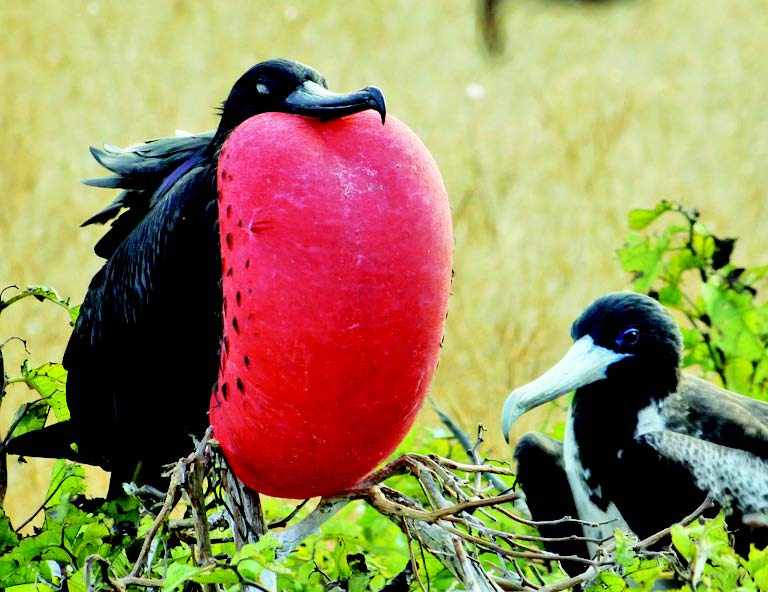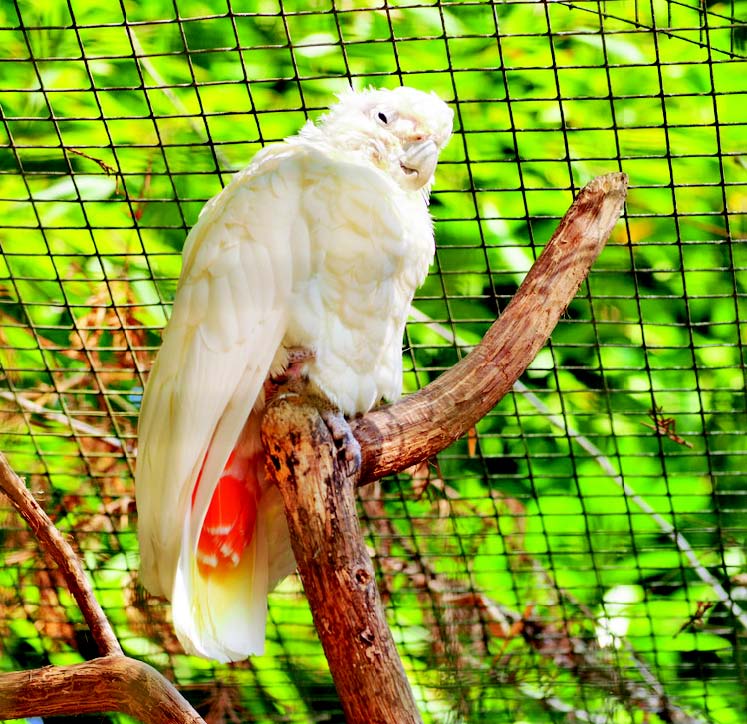Birds play an important role in different habitats; they help maintain a balance in the natural world. Sadly, the depletion in the numbers of our fine, feathered friends is getting worse.
As of 2018, there are 15 species of globally-threatened birds in the Philippine Territory alone, based on the Red List of the International Union for the Conservation of Nature (IUCN). These bird species are therefore critically endangered: their extinction looms over us, unless something is done to help them survive.
Here’s a shortlist of the top five endangered birds, grouped according to family.
When (bleeding-heart) doves cry
This is what it sounds like when doves cry” — the late Prince once sang. It’s easy to relate, what with deforestation contributing to the eradication of several species of bleeding-heart doves.

These timid, ground-dwelling birds, known for their striking red or orange plumage that resembles an open wound on their white breasts, thrive in lowland forests and forage on the forest floor. The Haribon Foundation, Birdlife International’s partner in the Philippines, is focusing on them by pushing for “rainforestation” — or the restoration of forests with the native species of trees — to benefit all flora and fauna, including the endemic and endangered bleeding-hearts.
Kalaw, the forest’s “Natural timekeeper”
Known as the forest’s timekeeper because of the loud calls they make at certain times of the day, kalaws are truly fascinating. Too bad their populations have been steadily decreasing.

The two most endangered hornbill species in the world, the Sulu Hornbill (now restricted to Jolo, Sulo and Tawi-Tawi) and the Rufous-headed Hornbill (local to Panay, Guimaras and Negros), are both found in the Philippines, according to the FAQs from the 6th International Hornbill Conference held in Manila in 2013. In the Philippines where a third of all Asian hornbill species are endemic, they are called “farmers of the forest”, traveling great distances while on the lookout for fruit-bearing trees and helping the ecosystem by scattering seeds on the forest floor.
Christmas (Frigatebird) in our Hearts
Christmas came early this year for bird lovers and conservationists alike with the rare sighting of the Christmas frigatebird, a critically endangered species of seabirds, at the Apo Reef Natural Park in Sablayan, Occidental Mindoro, on June 25, 2018, according to a statement released by the Mindoro Biodiversity Conservation Foundation, Inc.

This large black seabird nests in tall trees in the forest and feeds primarily on flying fish, squid, and other marine life. According to the IUCN Red List, the Christmas frigatebird has a small population that breeds one fledgling every two years in a small area of just one island. And the current population of the mature birds globally now is estimated at 2,400 to 4,800 mature individuals.
Katala, thye beautiful mimic of Palawan
It’s evident why the locally known kalangay or katala, a.k.a the red-vented Philippine cockatoo, is so popular. This bird’s beautiful white plumage is made to look even more striking because of red and yellow undertail coverts. The innate ability to mimic a human voice makes this special species even more interesting.
The Philippine cockatoo, once indigenous all around the Philippines, made it to the IUCN’s red list as a critically endangered species because of rampant poaching and eradication by local farmers who consider them as pests.

The Rasa Island Wildlife Sanctuary in Narra, Southern Palawan serves as a stronghold for the Philippine cockatoo. From 23 specimens when they started in 1998, the numbers have grown to more than 300, according to the Katala Foundation, Inc. Chief Operating Officer Indira Lacerna-Widmann. That figure comprises one-third of the global population of the species — all the more reason for the foundation to continue their advocacy to save the katala.
Fly like an Eagle
Grammy Award winner Seal sings about wanting to fly like an eagle, something that’s rather hard as of late, especially if you have the Philippine eagle in mind. As one of the largest eagle species in the world, the Philippine monkey-eating eagle has gone from being a majestic bird of prey — king of thick, tropical rain forests on the larger Philippine islands — to being the one being preyed upon, with very few of these great raptors left.

Now confined to natural protected reserves in Leyte, Samar, and portions of Luzon and Mindanao, they have been reduced to some 100 to 300 in number because of the destruction of their tropical rain forest habitat, not to mention hunting by unscrupulous individuals.
Good news with a Caveat
The Convention on the Conservation of Migratory Species of Wild Animals recently added three migratory bird species to their appendices, according to Jonathan Mayuga’s 2017 article for Business Mirror. This updated listing was considered a huge step towards the protection of these species.
At the same time, it serves as a wake-up call for everyone to realize what the threat to these bird species’ survival means. By failing to address climate change, massive deforestation, and dwindling biodiversity, mankind will cause not only the extinction of these beautiful birds, but eventually, also its own.
This appeared in Animal Scene magazine’s December 2018 issue.





